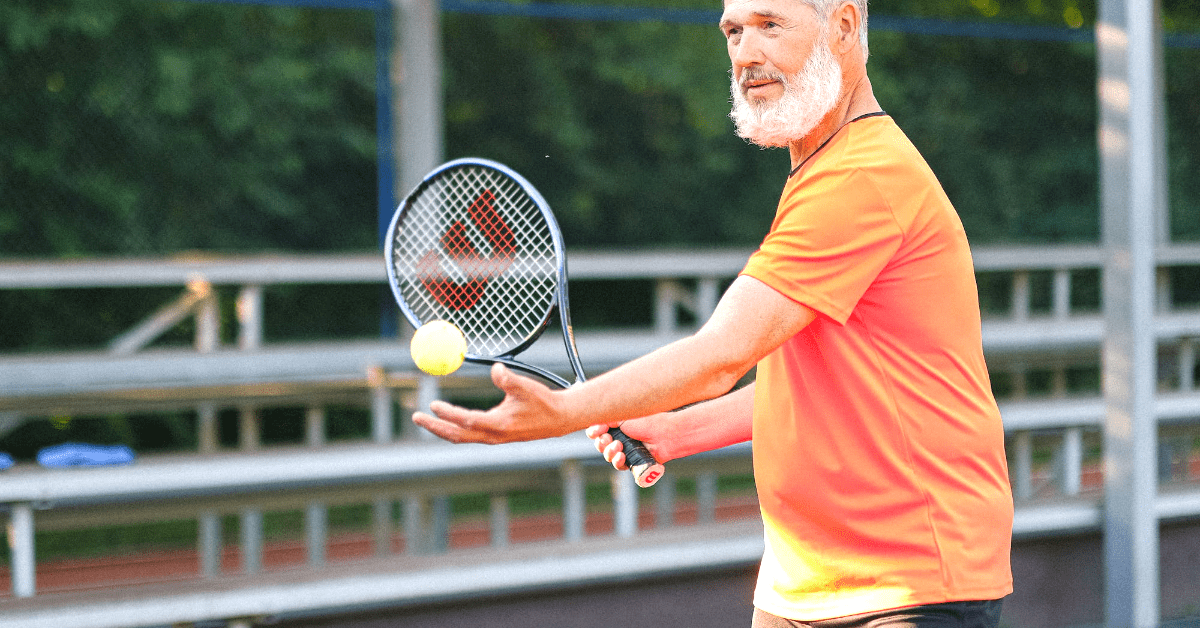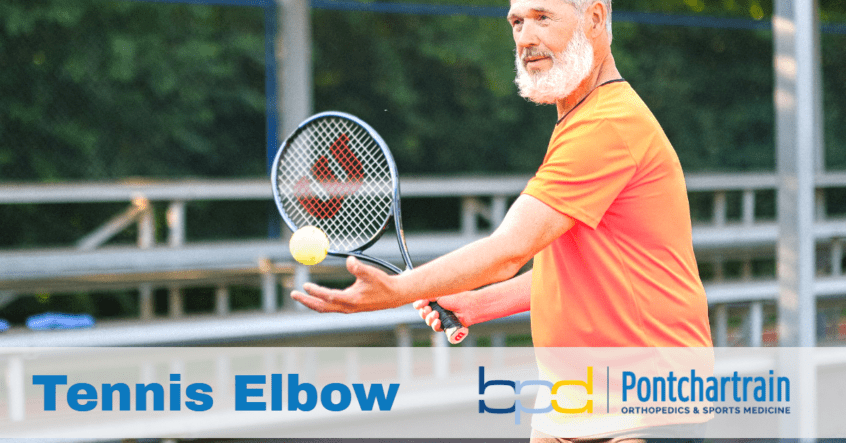
What is Tennis Elbow?
Tennis elbow is a painful condition that affects the outside of the elbow and is caused by overuse. Also known as lateral epicondylitis, the condition is an inflammation of the tendons that attach the forearm muscles to the outside of the elbow. It can also be a micro-tearing of the forearm muscles and tendons.
Within your elbow there are three bones which are the upper arm bone (humerus) and two bones in the forearm (radius and ulna). At the bottom of the humerus there are bony bumps called epicondyles. The lateral epicondyle is located on the outside (lateral) of the elbow and is part of the joint held together by muscles, ligaments, and tendons. The muscles in your forearms extend your wrist and fingers while the tendons attach the muscle to the bone. The tendon, or extensor, called the extensor carpi radialis brevis (ECRB) is the tendon usually involved.
Tennis players flex their forearm muscles—which insert on the lateral (outside) and medial (inside) portion of the elbow—throughout their swing. Upon impact with the ball, the flexed muscles and their tendons experience a great deal of force. When impact swinging motions are repeated over and over, the tendons can become irritated and inflamed.
What are Symptoms of Tennis Elbow?
The most common symptom of tennis elbow is pain on the outside of the elbow. In most cases the symptoms develop gradually with no specific injury.The pain can be sharp, dull, or aching. It is often worse when the wrist is extended or something is tightly gripped. Pain may increase with continued, repetitive forearm activity.
Other symptoms include:
- Tenderness to the touch
- Weakness in the forearm
- Weak grip strength
- Burning on outer part of elbow
- Swelling
Poor swing technique can contribute to tennis elbow. For example, if you hit a backhand in tennis with your elbow flared out, you are more likely to develop the condition. Weak forearm muscles can also increase your risk.
While often thought of as a sporting injury, athletes are not the only people who receive this diagnosis. Anyone who participates in work or recreational activities that require repetitive wrist and hand extension or consistent use of the forearm muscles can suffer this injury. Occupations such as cooks, butchers, painters, and carpenters are prone to the condition.
How is Tennis Elbow Treated?
In order to treat tennis elbow, you will first need to be diagnosed. Dr. Donnelly will likely diagnose tennis elbow based on your medical history and physical examination. He will take into consideration how your symptoms developed, your personal risk factors (like rheumatoid arthritis or nerve disease), recreational activities, and any previous elbow injuries.
During the examination Dr. Donnelly may ask you to perform certain tasks to help with diagnosis. For instance, in order to determine if your muscles are damaged he may ask you to straighten your fingers and wrist against resistance. He may also order imaging tests, such as X-rays or an MRI, to rule out other conditions. Once a diagnosis is reached, treatment options will depend on the severity of your pain and the length of time you have had the condition.
Non-Surgical Treatment Options
Activity Modification
Slowing down or stopping pain producing activities helps speed up recovery.
Bracing
A removable brace supports the forearm muscles and tendons.
Nonsteroidal Anti-inflammatory Drugs (NSAIDs)
Over-the-counter and prescription medications that are used to decrease inflammation and pain.
Physical Therapy
Passive and active physical therapy treatments may be used to decrease inflammation and pain, and improve muscle flexibility and strength.
Corticosteroid Injections
Fast acting, powerful anti-inflammatory medication can be administered via injected directly into the inflamed area.
Surgery may be necessary if your symptoms are not relieved within six to twelve months. The type of surgery will depend upon several factors including the extent of your injury and your personal health. Most surgery for tennis elbow is outpatient surgery. You can expect to be given a sedative to relax you and numbing medicine for your arm. After the surgery is over, the incision site will be covered with bandages and you should be able to go home on the same day as your surgery.
Non-Surgical Treatment Options
Open Surgery
Dr. Donnelly will make an incision over your injured tendon and scrape away the unhealthy part of the tendon. The tendon will either be stitched to other tendons or repaired with a suture anchor. The incision is closed with stitches at the end of the surgery.
Arthroscopic Surgery
After Dr. Donnelly makes one or two small incisions, he will insert an arthroscope (a thin tube with a tiny camera and light on the end) and watch the monitor attached to the camera. Using the same method as open surgery he will attempt to repair the injured tendon. Some of the benefits of this type of surgery versus open is less postoperative pain, faster healing time, and lower infection rate.

